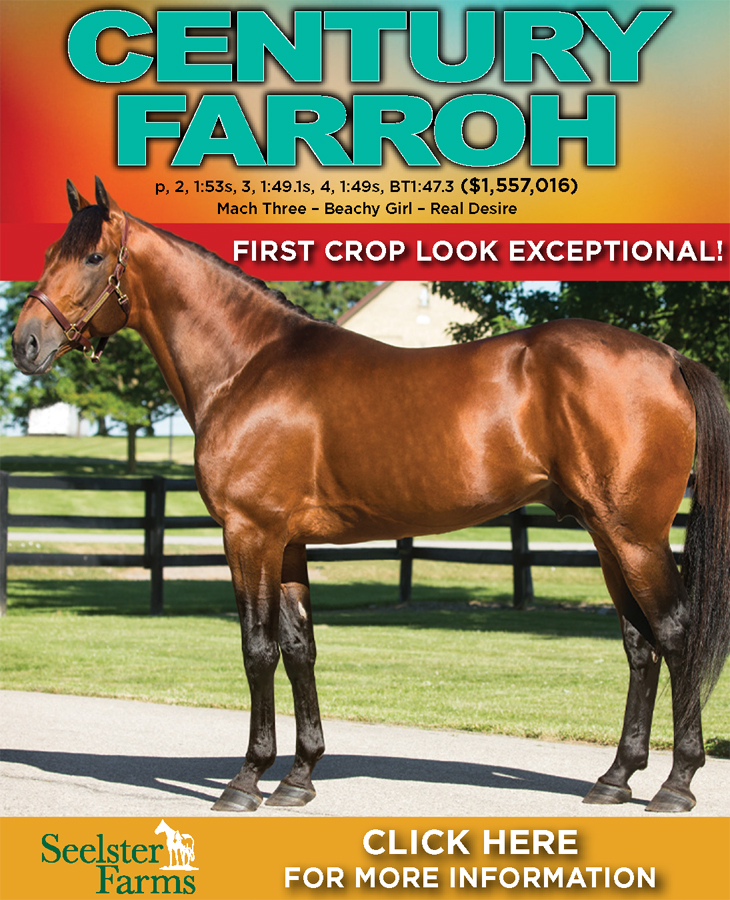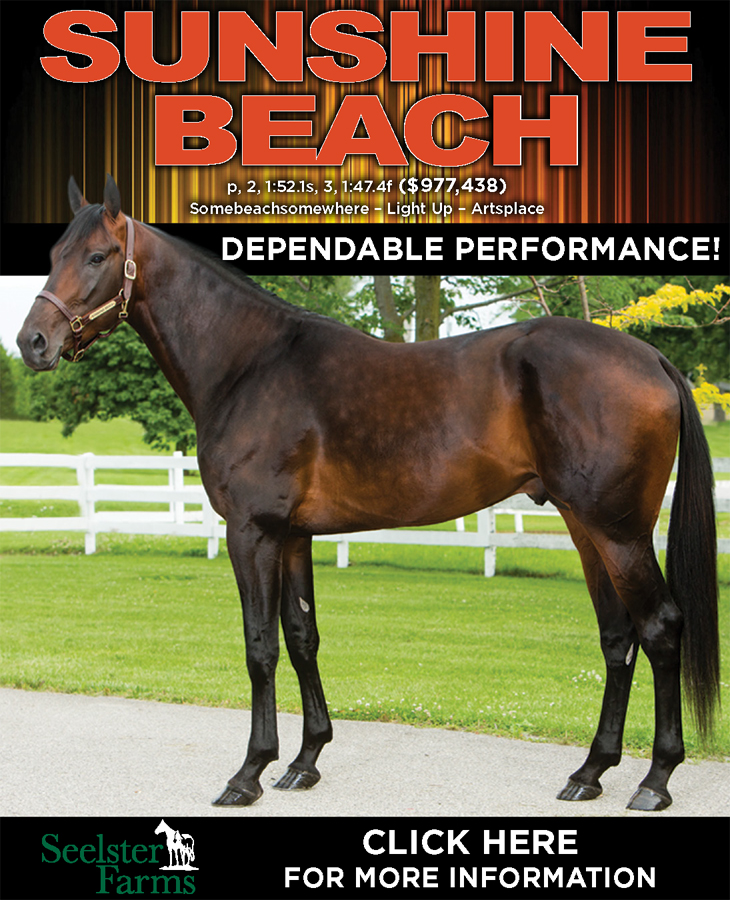

Bill McLinchey was born to be a standardbred racing executive
by Murray Brown
Bill McLinchey was likely born to be what he has become: vice president, standardbred racing for Woodbine Entertainment Group (WEG). If not that, certainly something closely associated with harness racing.
Both his father and grandfather had small stables and trained horses. He has been around horses, specifically harness horses, all his life. He is related to three Hall of Famers — uncles John and Jim Campbell and great grandfather Dunc Campbell. McLinchey initially worked in the race office at Woodbine and Mohawk under Scott McKelvie where he learned a great deal. From the race office he moved onto nighttime manager of racing at WEG. He served in that capacity for several years before becoming the director, standardbred racing. This past year he was promoted to his present position. April of this year will be his 20th year working for Woodbine.
You’ve been at WEG for all your adult life. You’ve seen virtually all of the horses that have raced at Mohawk and previously at Woodbine. Do you have a favorite?
“That would have to be Somebeachsomewhere. He was a horse that the people loved and wanted to see. There was buzz around the racetrack as soon as an overnight sheet with his name on it was printed. He drew a huge crowd from all over Canada every time he raced. In recent years, Bulldog Hanover had a similar following. There was a real sense of Canadian pride every time both of those horses raced.”
You race 222 days a year at Mohawk, more than any other major track. How do you keep your product fresh and your customers coming back?
“It is something we are constantly aware of. Our goal is to present a quality product. I believe that for all intents and purposes we succeed in that goal. We strive to present a well-balanced match between quality overnight racing and high-level stakes racing. We are presently in what we refer to as our down time, meaning that we only race four times a week, rather than our peak of the season five nights. This time of year, our racing consists almost entirely of overnights. Beginning this month, we are adding a series of late closers featuring both younger and older horses, a few of which hopefully will become the stars of our summer racing. We gradually evolve from entirely overnight racing to where a significant portion of our race cards will be made up of younger horses and stakes events, a good many of which include Ontario Sires Stakes.”
It seems, looking from the outside that you, perhaps, more than most other racing jurisdictions, have a great relationship with your horseman’s association.
“I believe that to be very much the case. The main reason for that, in my view, is that our goals, especially our main goal is almost identical. In just a few words we strive to present a quality product featuring the best horses available for the betterment of the entire sport. I look upon COSA and Bill O’Donnell as being great partners. If you have a problem getting along with Bill O’Donnell, chances are that it is you that is the problem.”
Is it just a coincidence that two of the major cogs in the WEG harness structure race secretary Tony O’Sullivan and manager, racing surfaces Brad Maxwell are former successful horsemen?
“Far from it. That is a huge asset in performing their duties. Not only are they extremely knowledgeable in knowing what is required to do their jobs well, they also have a great relationship with the horsemen they serve. It has certainly been a smooth transition for both gentlemen from running successful stables to being successful in their current roles with Woodbine.”
WEG likely has the best stakes program of any racetrack in North America, perhaps the world.
“It is something that has grown and evolved over time. I like to think that we possess a perfect mix of stakes events beginning with our late closers, then to the Ontario Sires Stakes and stretching to our major Grand Circuit events including, but far from limited, to the three million-dollar races, the Pepsi North America Cup, the Metro and the Mohawk Million.”
Let’s speak specifically about the Mohawk Million. It has undergone a rather significant transformation this year.
“After presenting the race successfully for four years, we thought that it needed some tweaking in order to be able to continue. The chief change we instituted was in lowering the buy in price from $100,000 to $50,000. The new slot price certainly sparked interest, and instead of struggling to sell all the slots at $100,000 we had 21 people put their name forward wishing to purchase a slot this year. We received nominations from owners in the U.S., Europe, and Canada including the provinces of Ontario, Quebec and Alberta.”
Has the resurgence of the Kentucky breeding and residency program had an adverse effect on your stakes program?
“Undoubtedly it has. Traditionally, after Hambletonian Day at The Meadowlands many of the Grand Circuit stables migrated north with their 2- and 3-year-old stars. Now some of them have decided to head southwest to Kentucky to participate in the lucrative sire stake program offered at the Red Mile. We have made tweaks and adjustments to our summer and Grand Circuit stakes with the hope our races continue to be a priority to all the major stables both locally and from the U.S.
“We aim to be the racetrack where you can race your stakes caliber 2- and 3-year-olds from the beginning of summer through, until the end of September, as the Grand Circuit makes its way to Lexington and on to the Breeders Crown. We are proud to offer the only million-dollar events for 2-year-olds in North America; for pacers in the Metro and the Mohawk Million for trotters. Money is certainly very important, but there is also something to be said for the prestige that comes from winning a grand circuit event.”















